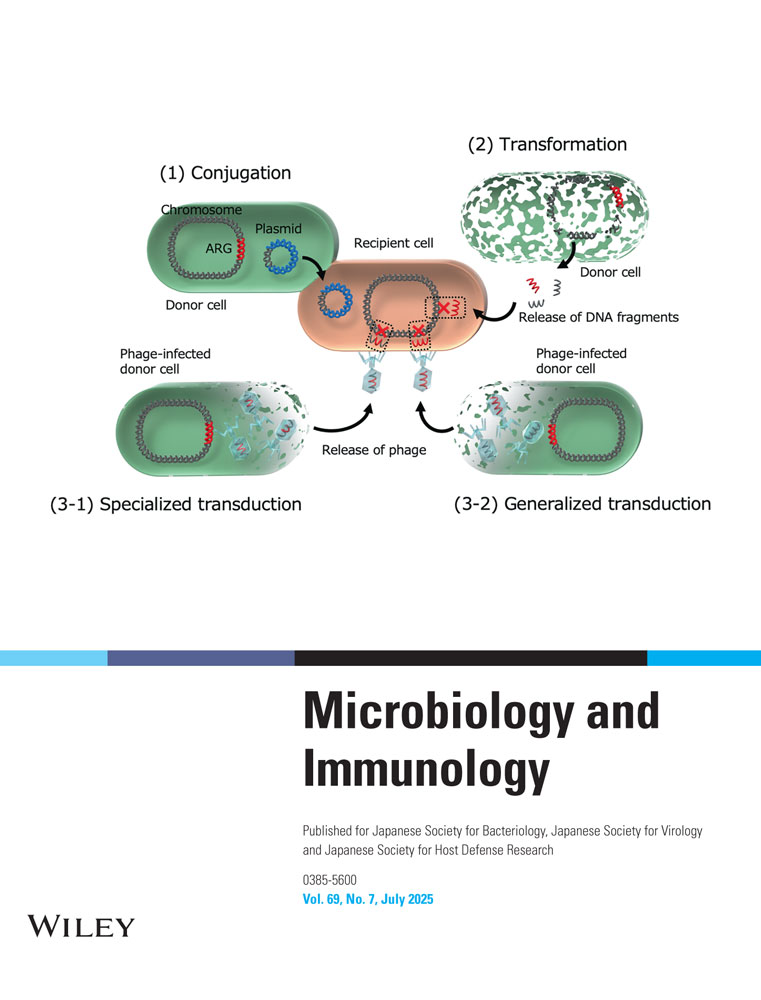Species Dependency of In Vitro Macrophage Activation by Bacterial Peptidoglycans
Abstract
The effect of various bacterial cell wall components on in vitro biological function of murine peritoneal exudate macrophages was evaluated. We examined four different parameters of metabolic activity and monokine secretion. Peritoneal exudate macrophages from rats and guinea pigs, all of the strains tested, were stimulated by whole bacterial cell wall preparations, purified bacterial cell wall peptidoglucans, its water-soluble peptidoglycan fragments, muramyl dipeptides and amphipathic substances. Murine peritoneal exudate macrophages were activated by amphipathic substances of gram-positive bacteria. However, macrophages from mice, irrespective of strains, were not stimulated in the in vitro assay systems by purified bacterial cell wall peptidoglycan, water-soluble bacterial peptidoglycan fragments or muramyl dipeptides. These results suggest that macrophage activation by bacterial peptidoglycan in vitro is animal species specific.
Abbreviations
-
- MDP
-
- muramyl dipeptide, specifically, N-acetylmuramyl-l-alanyl-l-isoglutamine
-
- L18-MDP
-
- 6-O-stearoyl muramyldipeptide
-
- L30-MDP
-
- 6-O-trecontanyl muramyldipeptide
-
- B30-MDP
-
- 6-O-[2-tetradecylhexadecanoyl]-muramyl dipeptide
-
- BH48-MDP
-
- 6-O-[3-hydroxy-2-dodecylhexacosenoyl]-muramyldipeptide
-
- MDP-l-Lys(L18)
-
- MurNAc-l-Ala-d-isoGln-l-Lys(L18), Nα(N-acetylmuramyl-l-alanyl-d-isoglutaminyl)-Nε-stearoyllysine
-
- SEPS-M
-
- Staphylococcus epidermidis peptidoglycan subunit-monomer
-
- LPCM-A
-
- bis-dissacharide-stempeptide dimer from Lactobacillus plantarum
-
- GMP4
-
- N-acetylglucosaminyl-β- (1-4) N-acetylmuramyl-l-alanyl-d-isoglutaminylmeso-2,6 diaminopimelic acid-d-alanine
-
- MP4
-
- N-acetylmuramyl-l-alanyl-d-isoglutaminyl-meso-2,6 diaminopimelic acid-d-alanine
-
- GMP3
-
- N-acetylglucosaminyl-β(1-4) N-acetylmuramyl-l-alanyl-d-isoglutaminyl-meso-2,6 diaminopimelic acid
-
- MP3
-
- N-acetylmuramyl-l-alanyl-d-isoglutaminylmeso-2,6-diaminopimelic acid




